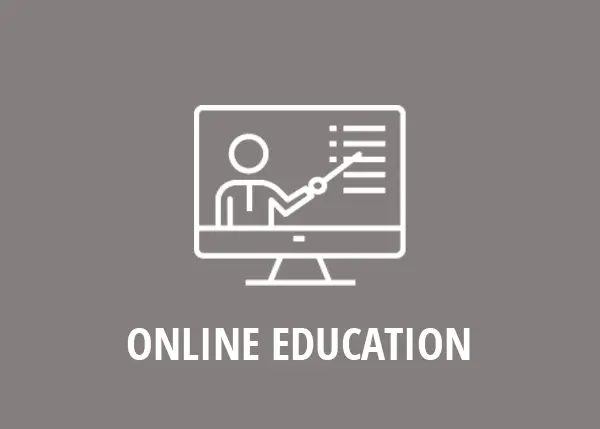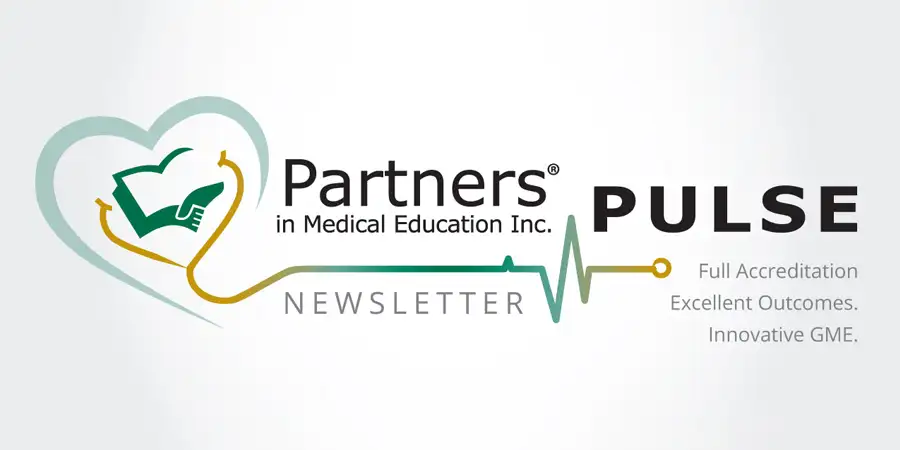Jump to Article
Sponsoring Institution
Program
GME Office / Administration
Finance / Public Policy

Sponsoring Institution
By: Heather Peters, M.Ed, Ph.D. Heather@PartnersInMedEd.com
Powering Excellence: The Sponsoring Institution’s Key Role in Program Oversight
Over the past decade, the role of program oversight by sponsoring institutions has evolved significantly. Today, the ACGME Institutional Requirements clearly define these expectations:
- Compliance & Accountability: Sponsoring institutions must ensure substantial compliance with ACGME Institutional, Common, specialty-/subspecialty-specific Program, and Recognition Requirements, along with ACGME Policies and Procedures. (IR 1.1.a.)
- Leadership & Oversight: In collaboration with the Graduate Medical Education Committee (GMEC), the designated institutional official (DIO) must have the authority and responsibility for oversight and administration of all ACGME-accredited programs. (IR 1.2.a.)
The Impact of Oversight in Real-World Scenarios
Oversight is not just a procedural requirement—it has real implications. Here are some instances where institutional oversight played a crucial role:
- Loss of Accreditation: A program loses accreditation, and the sponsoring institution is held accountable for inadequate support during residents’ transition to new training programs.
- Legal & Media Exposure: A hospital is involved in high-profile litigation, triggering a site visit for cause by the ACGME.
- Leadership Turnover: A sponsoring institution with frequent program leadership changes is required to provide GMEC documentation to demonstrate stability and compliance.
- Complaints Leading to Site Visits: Many complaints initially addressed at the program level escalate, resulting in site visits for cause at the institutional level.
These examples highlight the significant authority and responsibility placed on the GMEC and the sponsoring institution in ensuring program quality and compliance.
Proactive Oversight: Special Reviews as a Tool for Program Success
A key internal process for oversight is the Special Review, initiated when program outcomes signal the need for additional support. Unfortunately, these reviews are often perceived as punitive, when in reality, they serve as proactive interventions to:
- Enhance the quality and effectiveness of the program’s clinical learning environment.
- Promote continuous improvement rather than reactive correction.
- Prevent programs from facing adverse accreditation outcomes or even loss of accreditation.
We must shift the mindset—Special Reviews are not a penalty, but a mechanism for sustained excellence.
Preparing for Continued Accreditation Site Visits
Another critical aspect of oversight is ensuring that programs are ready for continued accreditation site visits. Any program that has not been site-visited in more than nine years is now eligible for this process. Sponsoring institutions must ensure that programs are adequately prepared for these audits, reinforcing a culture of compliance and continuous improvement.
Final Thought: We Are in This Together
Program oversight is not just about meeting standards—it’s about fostering an environment where graduate medical education thrives. With strong institutional oversight, proactive support, and a commitment to continuous improvement, we can ensure the highest quality of training for future physicians.
To help sponsoring institutions with their program oversight responsibilities in regards to the current “continued accreditation” audit, Partners® has created a Readiness Assessment process to assess critical site visit components efficiently and with minimal time commitment from your program administrative staff. This will help you in your sponsoring institution’s role in program oversight in preparation for site visits.

Program
Amy Durante, MHA amy@partnersinmeded.com
Let’s Get Ahead of Ourselves
With the programs now being on the other side of the hectic interview season, it is a good time to focus on program improvements before the new residents/ fellows begin.
One of the best ways to do this is by reviewing the ACGME resident/faculty surveys. To prepare for the release of the 2024-2025 surveys, it is important to analyze and compare the previous years’ results, if you have not already done so. This analysis can then be used for the current year as well as future years and be all set up for when the program receives the new surveys right in the heart of onboarding season.
Utilizing a spreadsheet to analyze the data provides a clear comparison for the previous years.
There are many ways in which to analyze the data. The following are the best practices:
- Highlight items with scores below 80-85% compliance
- Highlight realms with downward trends
- Highlight realms with upward trends
- Highlight areas of concern
- Review your Sponsoring Institution’s Special Review Protocol to determine if the results warrant a potential Special Review
- Results for all programs individually as well as in aggregate for the Sponsoring Institution should be reviewed by the Graduate Medical Education Committee (GMEC).
Once the surveys have been analyzed, the program should treat any area of noncompliance as if it were a citation as well as discuss the results with the residents/fellows, faculty, and Program Evaluation Committee (PEC) members in order to collaboratively create action plans for areas of noncompliance. These action plans should be added to the program’s Major Changes section for the Annual ADS Update in an effort to avoid citations. Additionally, the program should highlight any accomplishments made from previous action plans or areas of noncompliance to clearly depict that the program is in a constant state of improvement.

GME Office / Administration
By: Christine Redovan, MBA, MLIS Christine@PartnersinMedEd.com
The Final Evaluation for Graduating Residents
It’s that time of year when we start thinking about the final evaluation for our graduating residents. We have noticed over the past year that programs are routinely receiving citations for not including ACGME required elements in the final evaluation. Regardless of the form you use – paper, electronic, or a hybrid – it must include the following items:
- [Use of] the specialty-specific Milestones, and when applicable the specialty-specific Case Logs. [CPR V.A.2.a).(1) (original citation) or 5.2.a (reformatted citation)].
This may be accomplished via a reference to the Milestones and Case Logs with the final data attached to your form. For those programs that are not procedure heavy yet may have a few procedures that residents become competent in performing, you may want to specifically list those. For example, internal medicine may have some residents that are competent in performing central lines or intubations.
- It must verify that the resident has demonstrated the knowledge, skills, and behaviors necessary to enter autonomous practice. [CPR V.A.2.a).(2).(b) or 5.2.c].
The best way to meet this requirement is to simply include the exact sentence in the final evaluation. You may want to bold it, or include it in a separate section, so it is easily seen by your review committee.
- The final evaluation must be shared with the resident upon completion of the program. [CPR V.A.2.a).(2).(c) or 5.2.d].
While the final evaluation is usually shared with the resident, we have found it is rarely signed by the resident. To document that the resident has seen this evaluation, the resident, and program director, should sign the form. You may use a physical or electronic signature. Ensure the dates of signatures are also added.
- Be sure to thoroughly read your specialty-specific requirements. Some specialties require additional information above and beyond the common program requirements. Psychiatry is one of those specialties that immediately comes to mind.
There are many ways to integrate these requirements. Do what works for you! Take a few minutes to review your current final evaluation to make sure you have the required elements, make any tweaks, run it by your CCC and PEC, and get ready to avoid this citation. If you need some inspiration, or an example, visit Partners® website to download our customizable Final Evaluation Template.
Finance / Public Policy
By Carmela Meyer, MBA, EdD carmela@partnersinmeded.com
Empowering Medical Residents/Fellows to Get Involved in Healthcare Policy and Advocacy
Educating residents and fellows regarding advocacy can make a significant impact on healthcare policies that influence the care of patients, medical practice, and population health. Whether Republican, Democrat, or Independent, we all have a voice to be heard. Policy leaders look to medical professionals to provide information to help guide their opinions regarding public policy. Residents and fellows can learn to raise awareness of the challenges faced by health care in addressing population health and disparities. Advocacy work facilitates the residents’ and fellows’ growth as well-rounded clinicians who are not only skilled in treating patients but are also knowledgeable about the systems that support their care.
Professional societies and organizations also have curricula available to begin educating trainees in your program. With time as a precious commodity in medical education, adopting publicly available curriculum that has been vetted is an easy way to add advocacy education to your curriculum.
- AMA has a section for Medical Resident Advocacy that includes articles and opportunities for resident/fellow leadership.
- The American College of Physicians has a series of self-advocacy videos.
- The Association of American Medical Colleges provides regular updates on public policy impacting health care, residency education, and national efforts.
- Many training programs include an online advocacy curriculum.
There are several ways that trainees can become actively involved in advocacy.
- Join Professional Organizations: National and local organizations like the American Medical Association (AMA), American College of Physicians (ACP), or others that advocate for physicians’ interests and provide platforms for policy involvement are good ways to join advocacy efforts. All of these organizations have committees focused on public policy.
- Attend Policy Conferences such resident sections of the AMA, ACP and AAMC or the trainees professional society.
- Engage in Local Advocacy: Opportunities also exist in state societies or reaching out to a local legislator to discuss a health care priority and issues that impact their practice.
- Collaborate with Faculty and Mentors: Faculty should include residents and fellows in their advocacy work. This is an opportunity to role-model the process.
Even small actions, like writing a letter to a legislator or participating in a grassroots campaign, can lead to significant change. Encouraging trainees to take the first step toward policy involvement is the beginning. As educators, it is our responsibility to reinforce the idea that as the next generation of physicians, their voices are crucial in shaping the future of healthcare.
 |
 |
 |



